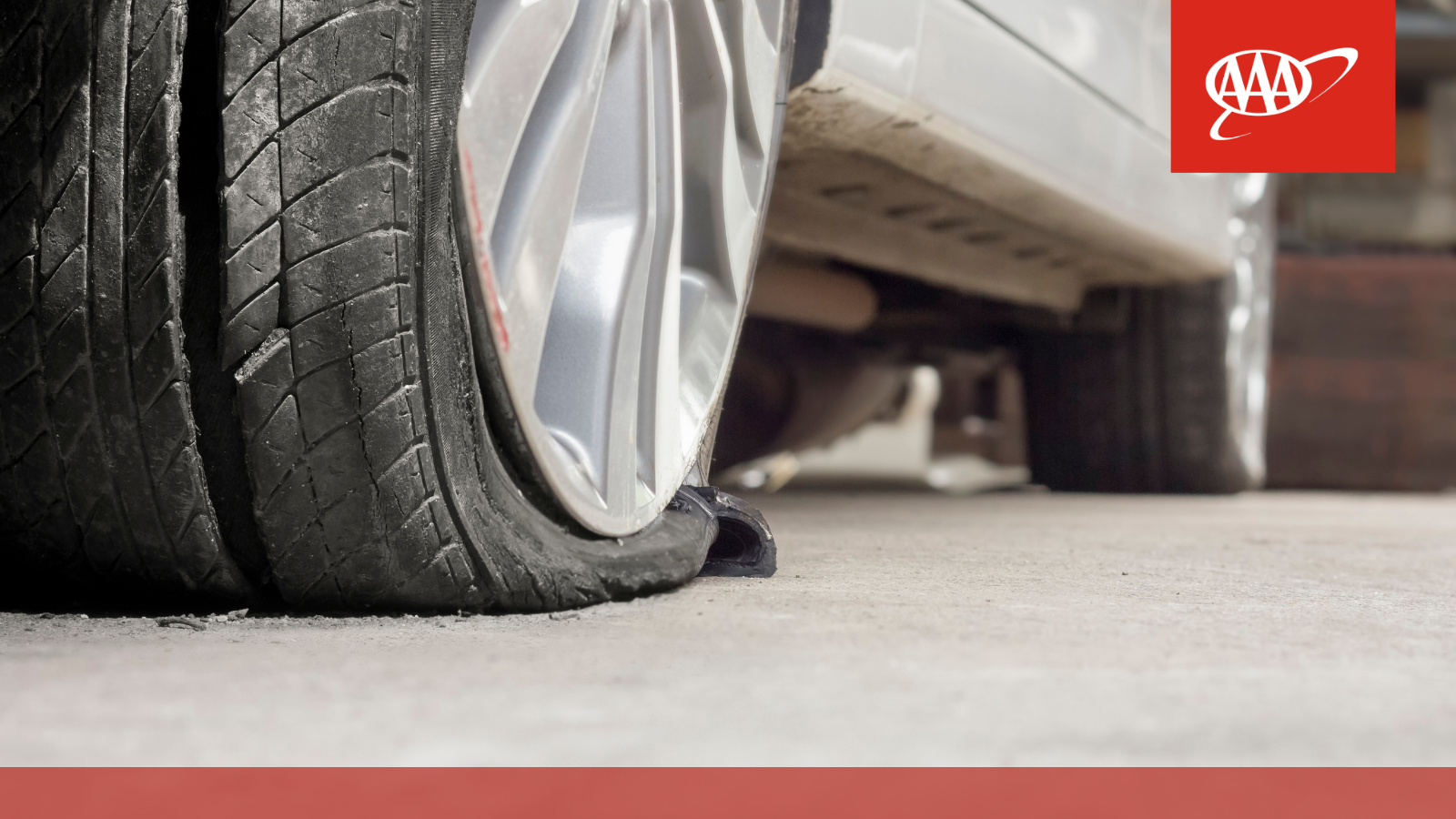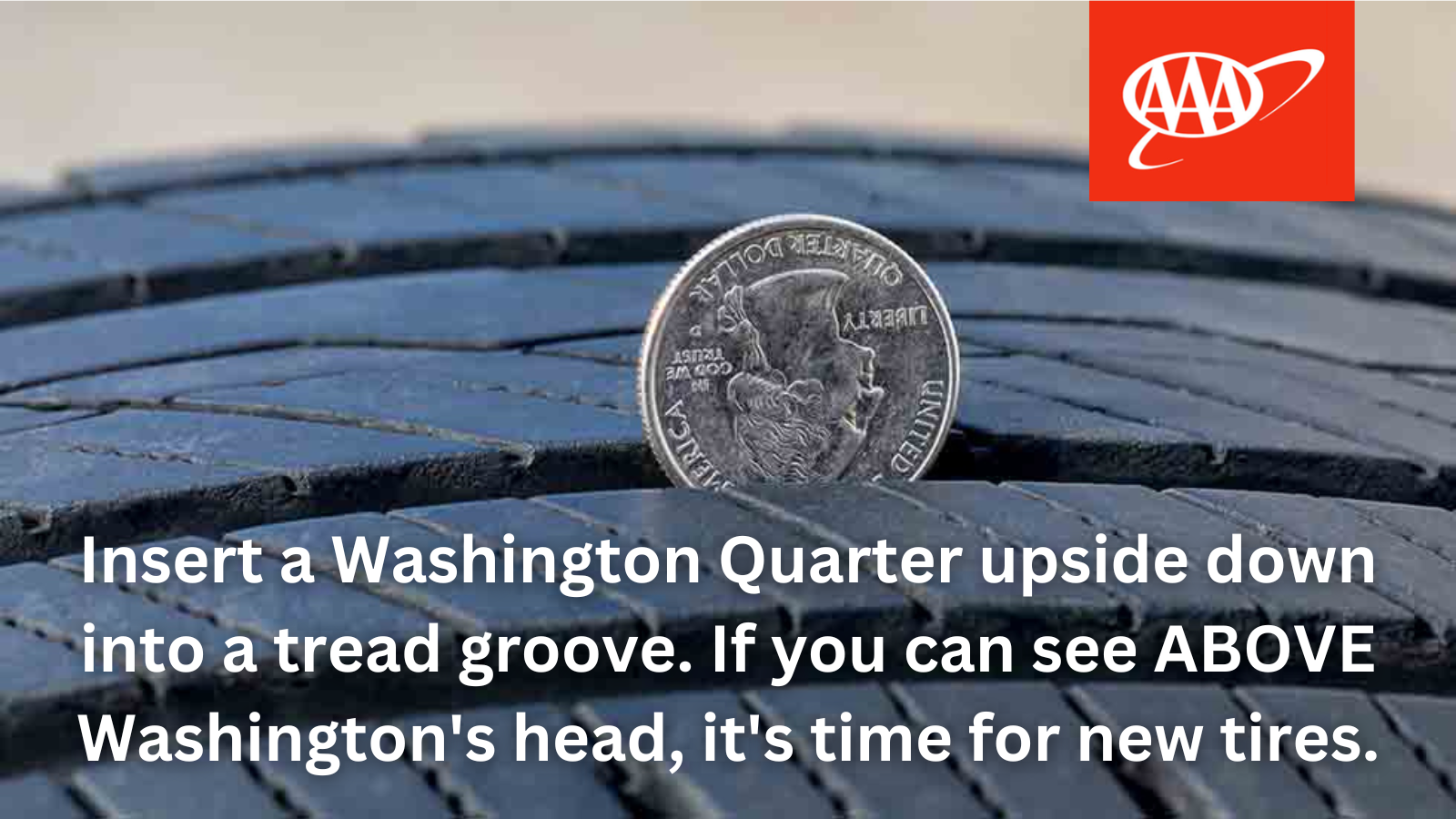With vacation season in full swing, AAA is reminding motorists that summer travel is where the rubber meets the road when it comes to tire maintenance.
“Your safety is riding on your tires. They are the only components of your car that have direct contact with the road surface. Tires play a critical role in how your vehicle brakes and how it handles,” said Kevin Freeman, local manager, AAA Car Care. “Before taking to the road, take time to ensure your tires are road-ready.”
With July expected to be a busy time for summer road trips, AAA is taking the opportunity during National Tire Safety Week ― June 24 through July 3 ― to remind drivers to inspect their tires before hitting the highway.
Summer’s heat is hard on tires

While winter’s cold temperatures can make it more difficult for tires to grip the road, summer brings its own challenges to your vehicle’s tires, leading to potential performance and safety problems. The sun’s heat, combined with normal friction from the road’s surface, can take its toll, causing tires to wear irregularly, wear out faster and be more prone to blowouts.
Hot pavement can lead to rubber degradation, increasing the potential for cracking, belt separation and tread irregularities. Heat can also cause dry-rot, or sidewall cracking, which occurs when the oils in the tire’s rubber evaporate. Dry tires are more susceptible to cracking and blowouts.
Summer’s soaring temperatures also affect tire pressure, one of the most important aspects of tire safety. Proper pressure for your tires is based on your tires when cool. For every 10-degree increase in temperature, tires can gain 1 to 2 pounds per square inch (PSI) of pressure. Overinflated tires not only wear prematurely, but are more prone to blowouts. Traction is reduced, increasing the risk of skidding. If tires are underinflated, however, friction can increase, raising temperatures within the tire and making a blowout more likely.
Worn tires take a heavy toll
Driving on worn tires increases the likelihood of a vehicle crash due to the impact on vehicle maneuverability and braking. Summer heat and rainy weather can compound the problem.
Research from AAA reveals that driving on worn tires at highway speeds in wet conditions can increase average stopping distances by a staggering 43 percent, or an additional 87 feet ― more than the length of a semi-trailer truck — when compared to new tires. With nearly 800,000 crashes occurring on wet roads each year and Americans now holding on to their cars longer than ever before, this is cause for concern.
AAA’s research also shows that in addition to increased stopping distance, worn tires reduce handling ability by about 30%.
“Well-maintained tires are the best defense against tire-related crashes,” Freeman said.
According to the National Highway Traffic Safety Administration (NHTSA), there are nearly 11,000 tire-related motor vehicle crashes nationwide on average every year, resulting in about 600 deaths.
While safety is the most important consideration for maintaining your vehicle’s tires, there are economic benefits as well. Proper tire pressure can save as much as 11 cents per gallon of fuel. Regular maintenance, including balance and alignment as well as rotation, helps tires last longer. Keeping tires properly inflated can extend the average life of a tire by 4,700 miles, according to NHTSA.
Inspect tires at least monthly
AAA recommends motorists get into a routine of checking their tires on a monthly basis, not only as an important safety step but to protect their investment. If potholes and road debris are a common hazard or drivers routinely drive long distances, tires should be inspected even more frequently.
“The more frequently these inspections are performed, the easier it will be to find a small problem, such as a nail in your tire, and have it fixed before it becomes a safety risk or a more expensive fix,” Freeman added.

The vehicle owner’s manual or the decal attached to the driver’s door jamb will provide you with the proper pressure for each of your vehicle’s tires. Use a tire gauge or the displayed tire pressures in the vehicle’s instrument cluster to determine when tire pressure needs correcting rather than relying solely on the vehicle’s tire pressure monitoring system (TPMS), which may only illuminate when tires are severely underinflated.
Good tire tread helps vehicles maintain traction with the road surface and shed water on wet roads. Check tread with a simple tread depth gauge available at any auto parts store or use the George Washington quarter test. Slip an upside-down quarter between your tire grooves, then look at Washington’s head. If you can see all of it, it’s time to start shopping for new tires.
How to identify common tire issues
Tire inspection should involve checking tire pressure, as well as conducting a visual inspection of all four tires. Follow the owner’s manual to schedule regular tire rotation and balance and alignment at a AAA-approved car care center. Here are the most common tire problems to look for during a visual inspection:
- Over inflation: Too much air pressure causes the tire’s middle section to be the primary point of contact with the road, causing it to wear faster than the edges.
- Under inflation: Inadequate pressure causes the tire’s outer edges to be the main point of contact with the road, causing it to wear more quickly than the middle area.
- Tread wear on one edge of the tire: This typically signals that the wheels are out of alignment.
- Erratic tread wear: This is often called cupping and may mean the wheel is out of balance. It can also occur when shock absorbers or other suspension components need to be replaced.
- Bubble or bulge: A bubble or bulge that forms on the tire sidewall or tread indicates one of the belts inside the tire has separated from those around it. Replace the tire as soon as possible.
- Sidewall cuts and tears: Cosmetic damage can usually be ignored, unless accompanied by a bubble or bulge. If cords of the tire are exposed and damaged, have the tire replaced.
While on the road, these changes in your vehicle may indicate a tire problem:
- Unusual vibration or thumping noise: Vibration or thumping noises can indicate a number of issues, including a flat tire, an out-of-balance tire, a flat spot on the tread or a tire with a separated belt.
- Pulling to one side: Pulling to one side while driving at a steady speed may indicate an underinflated or damaged tire on that side. The pull could also be caused by poor wheel alignment or a brake problem.
What to do in the event of a blowout
Although proper tire maintenance goes a long way toward preventing tire blowouts, not all blowouts are preventable. If you experience a tire blowout, don’t panic. Overreaction, such as slamming on the brakes or abruptly letting up on the accelerator, will make it more difficult to control your vehicle. Instead, follow these steps:
- Keep both hands on the steering wheel.
- Maintain vehicle speed if possible and if it’s safe to do so.
- Gradually let up on the accelerator.
- Correct the steering as needed to stabilize your vehicle and regain control. Look in the direction you want the vehicle to go and steer in that direction.
Once your vehicle is stabilized, continue to slow down and pull off the road where it’s safe to do so
















